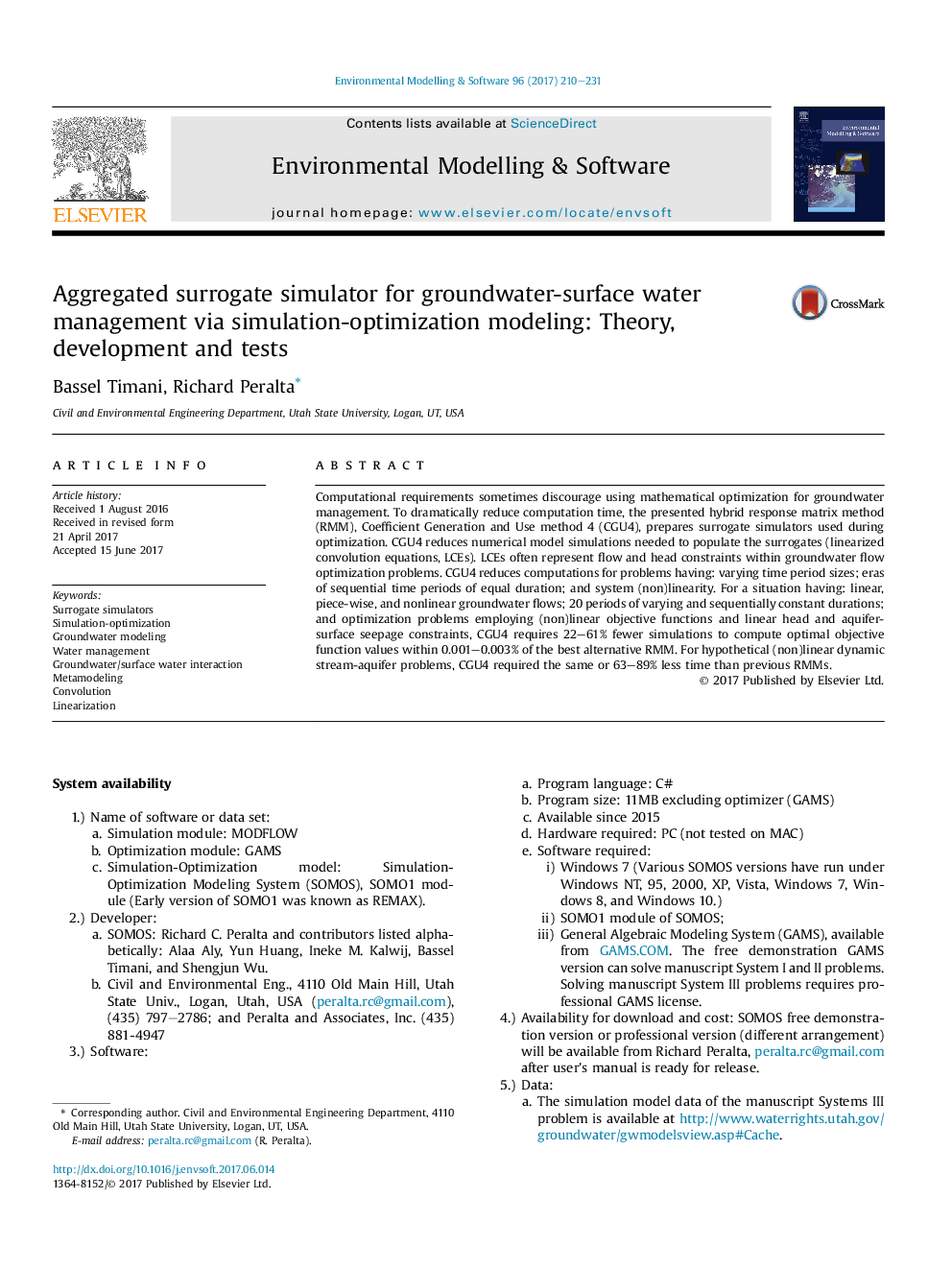| Article ID | Journal | Published Year | Pages | File Type |
|---|---|---|---|---|
| 4978248 | Environmental Modelling & Software | 2017 | 22 Pages |
Abstract
Computational requirements sometimes discourage using mathematical optimization for groundwater management. To dramatically reduce computation time, the presented hybrid response matrix method (RMM), Coefficient Generation and Use method 4 (CGU4), prepares surrogate simulators used during optimization. CGU4 reduces numerical model simulations needed to populate the surrogates (linearized convolution equations, LCEs). LCEs often represent flow and head constraints within groundwater flow optimization problems. CGU4 reduces computations for problems having: varying time period sizes; eras of sequential time periods of equal duration; and system (non)linearity. For a situation having: linear, piece-wise, and nonlinear groundwater flows; 20 periods of varying and sequentially constant durations; and optimization problems employing (non)linear objective functions and linear head and aquifer-surface seepage constraints, CGU4 requires 22-61% fewer simulations to compute optimal objective function values within 0.001-0.003% of the best alternative RMM. For hypothetical (non)linear dynamic stream-aquifer problems, CGU4 required the same or 63-89% less time than previous RMMs.
Keywords
Related Topics
Physical Sciences and Engineering
Computer Science
Software
Authors
Bassel Timani, Richard Peralta,
